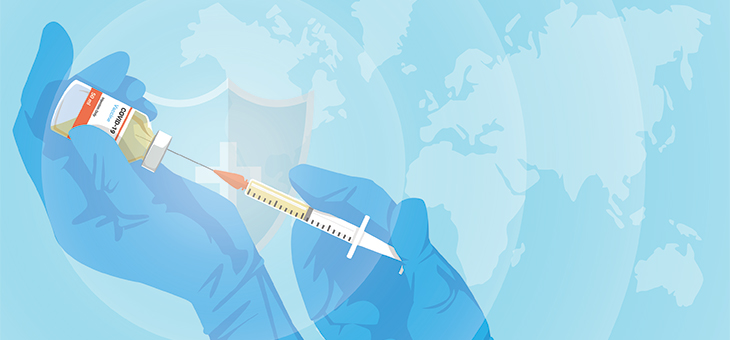Today, RMIT ABC Fact Check takes aim at incorrect claims about COVID-19 vaccine “shedding” and AstraZeneca blood clots.
Vaccine shedding and the COVID-19 jab
News that a US school teacher warned students not to hug their parents if the latter had been vaccinated against COVID-19 has put the spotlight on misinformation around so-called “vaccine shedding”.
Among the many COVID-19 conspiracy groups operating on social media, dozens of recent posts focus on fears that people vaccinated against COVID-19 can “shed” the virus and infect those around them.
In some cases, misleading posts have suggested vaccine shedding has led to irregular periods in unvaccinated women who have been in contact with people who have been vaccinated. Fact Check debunked those claims last week.
But what exactly is vaccine shedding, and does it occur with COVID-19 jabs?
As explained in a fact check produced by Health Feedback, an internationally accredited fact-checking organisation, vaccine viral shedding can occur in live-attenuated vaccines.
“Because they contain a weakened version of the pathogen, live-attenuated vaccines have the potential to shed live viruses,” the fact checkers noted.
“However, what’s being shed is the weakened version of the pathogen used in the vaccine, which doesn’t make people sick.”
Of vaccines routinely administered by health systems, the rotavirus and chickenpox vaccines could shed the virus, Health Feedback explained, though the chance of infection from shedding in both cases was low.
COVID-19 vaccines, however, are a different story.
According to Professor Robert Booy, an infectious diseases paediatrician at the University of Sydney, COVID-19 vaccines were “completely different” and the idea they could shed was a “major myth”.
“[COVID-19] vaccines have no live elements in them,” Professor Booy told Fact Check.
There were four ways COVID-19 vaccines were being produced, Professor Booy said, three of which (with mRNA, DNA and purified protein) did not involve using the whole or live virus.
A fourth type of vaccine, similar to those used for polio and influenza, involved the whole virus that had been inactivated or killed.
Professor Booy explained that while a mistake in the production process of this type of vaccine could result in the virus not being properly inactivated, such an error would be “almost unbelievable” with the checks and balances in place.
He also noted that such vaccines were not being used widely.
This isn’t an AstraZeneca blood clot
An image posted on Facebook showing a severely bruised arm has been shared widely with a caption suggesting the injury was the result of an AstraZeneca COVID-19 vaccine received hours earlier.
The post followed the release of a statement by the Australian Technical Advisory Group on Immunisation (ATAGI) which noted that there was “evidence of a rare but serious side effect involving thrombosis (clotting) with thrombocytopenia (low blood platelet count) following COVID-19 Vaccine AstraZeneca”.
But experts told RMIT ABC Fact Check the photo did not appear to depict a post-vaccination blood clot.
Professor Paul Monagle, a haematologist at the Royal Children’s Hospital in Melbourne, told Fact Check via email that the photo shows “a bruise (cutaneous bleeding), not a blood clot (intravascular abnormal clotting)”.
Meanwhile, Allen Cheng, director of the Infection Prevention and Healthcare Epidemiology unit at Alfred Health, said the image did not reflect the side effect that had been associated with the AstraZeneca vaccine.
“It doesn’t look like a case of thrombosis with thrombocytopenia (TTS) — these usually involve the internal veins and aren’t visible externally (occasional cases have involved limb vessels, but are less common …[I]n those, you generally just see swelling of the affected limb),” Professor Cheng wrote in an email.
“Additionally, TTS usually occurs between four and 28 days after vaccination, so seven hours would be far too early. Bleeding associated with low platelets usually looks different (small pinprick bleeds, called ‘petechiae’) rather than this extensive bruising.”
Hassan Vally, an epidemiologist at La Trobe University, agreed the pictured bruising didn’t look like TTS, saying symptoms typically took longer than seven hours to appear.
“It is not the rare blood-clotting syndrome,” he said. “The timing is wrong and too early to be this syndrome. This syndrome occurs between four and 20 days after vaccination.”
While localised bruising can occur after vaccination, Professor Vally explained that more typical symptoms of TTS generally included headache, blurred vision, shortness of breath, chest pain, leg swelling or abdominal pain.
What vaccine or coronavirus misinformation have you heard lately?

